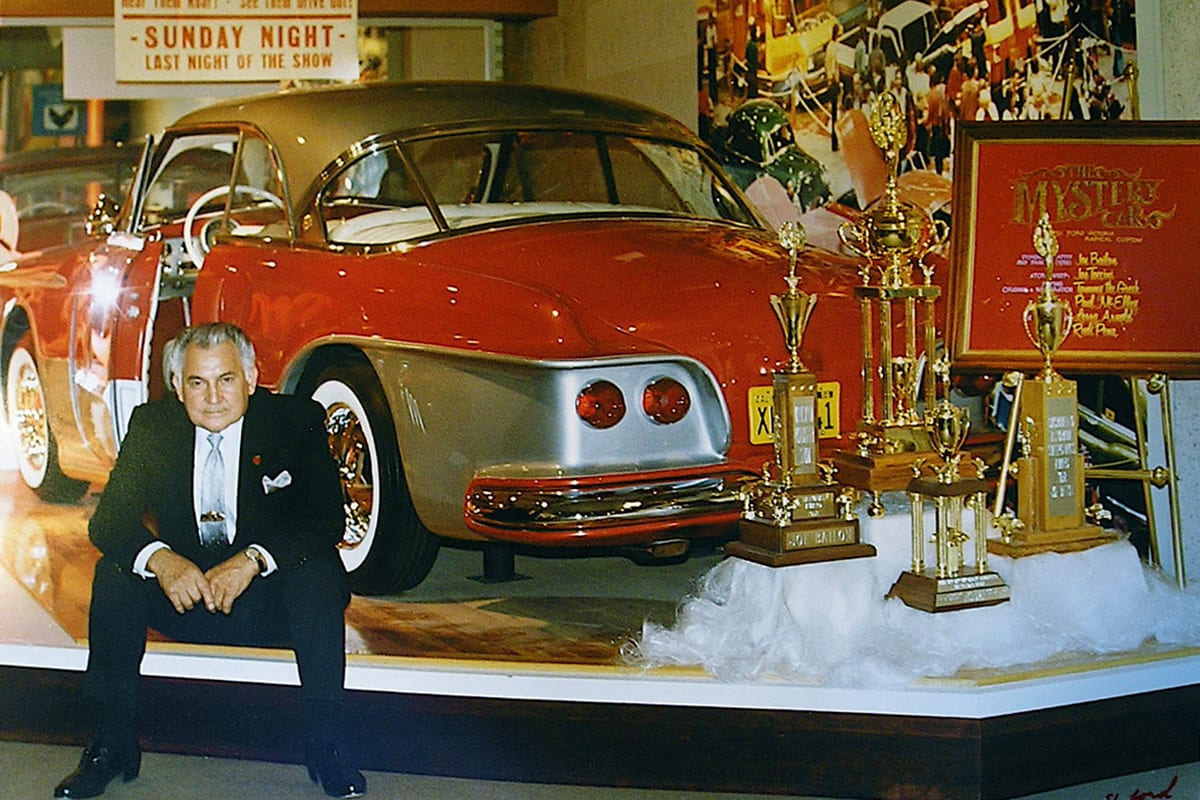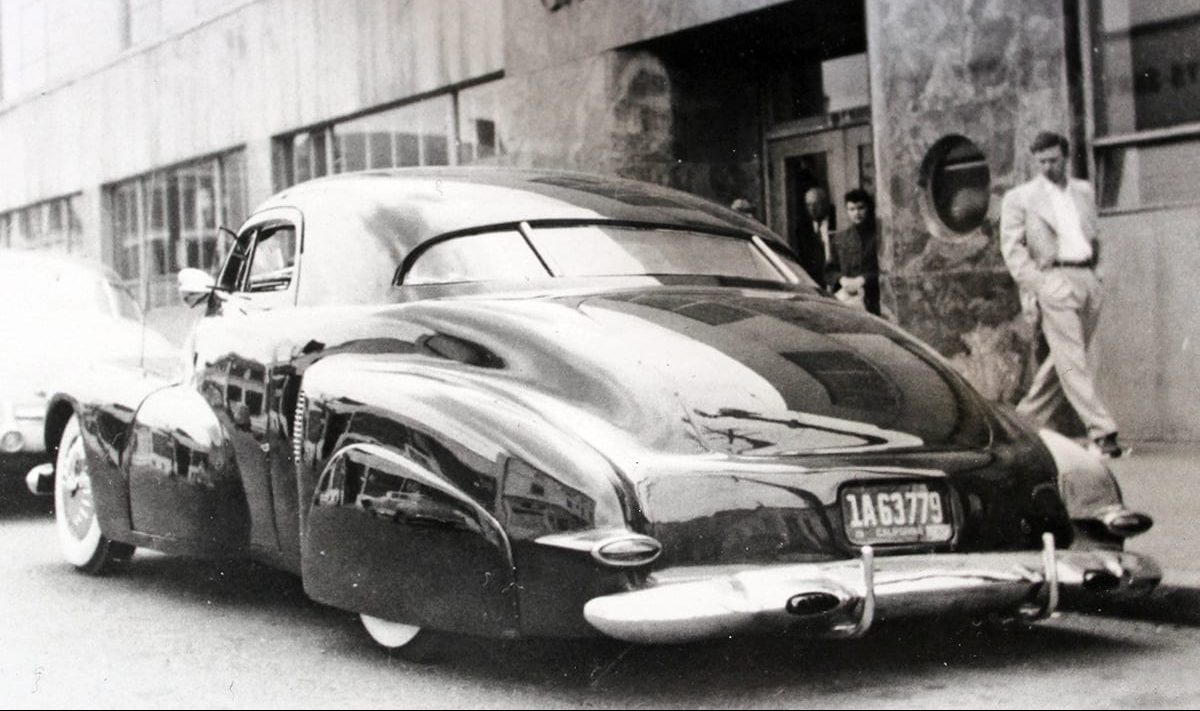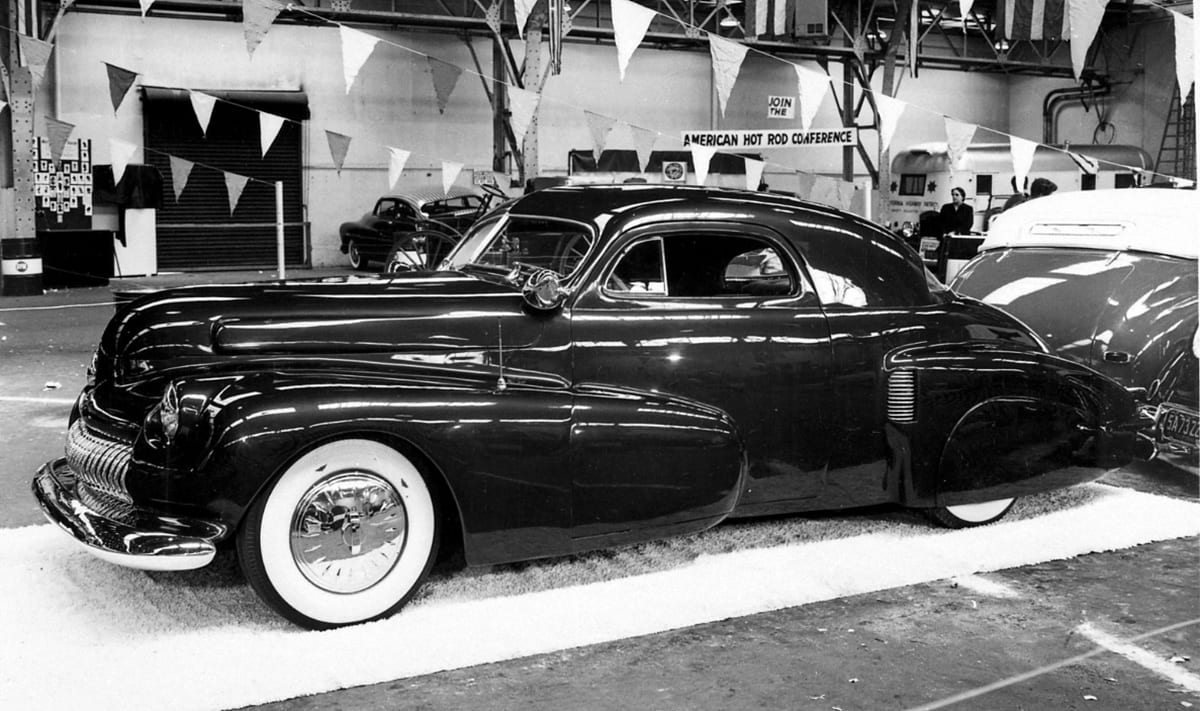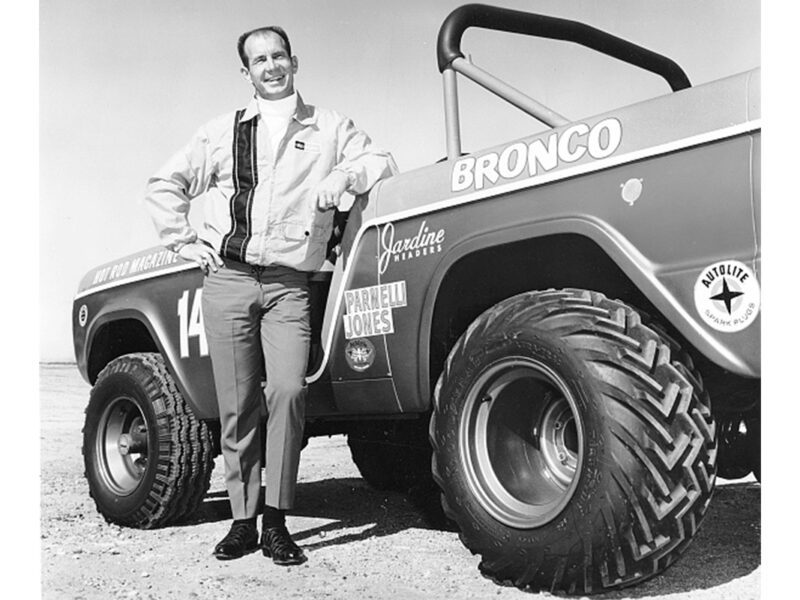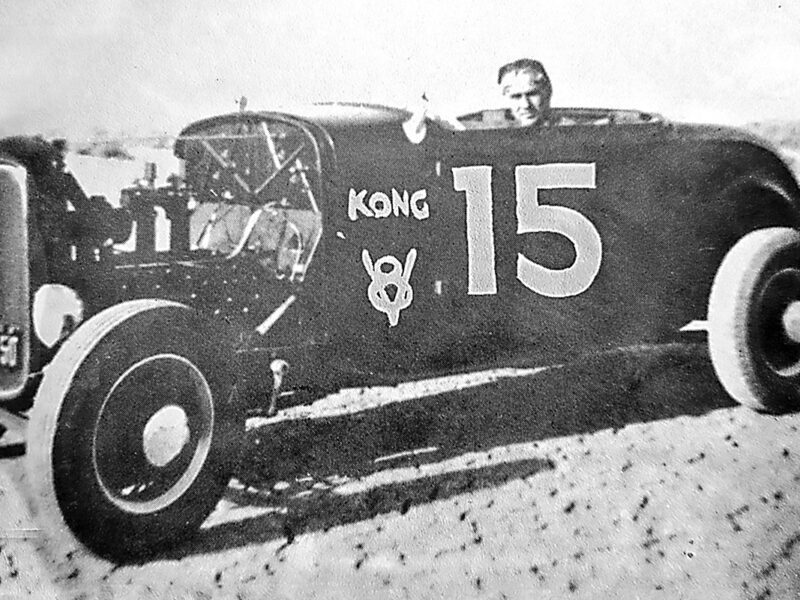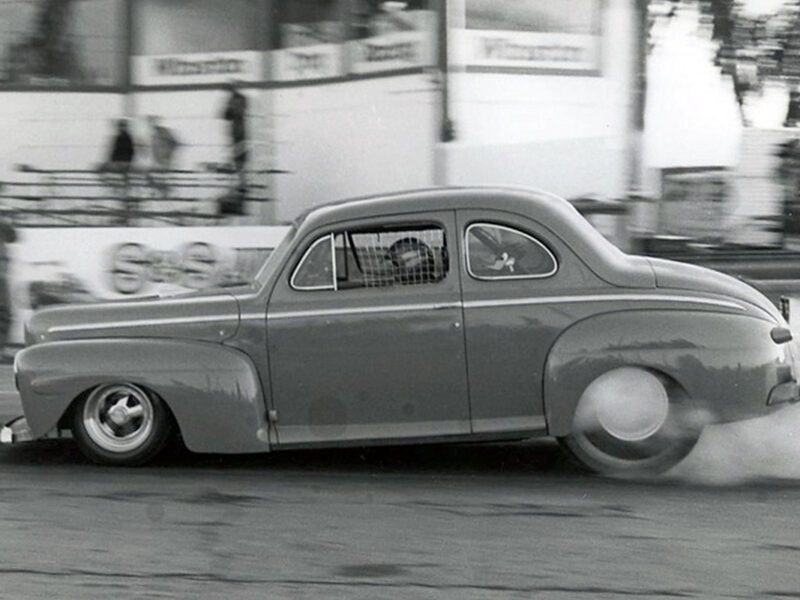Joe Bailon – The Candy-Appled Custom Guru
After World War II, hot rods and customs developed on parallel yet different tracks. Innovators like George Barris and Gene Winfield massaged metal in unique and shapely ways, creating stunning pieces of rolling art. At the same time, racers like Ed Iskenderian and Alex Xydias lived in the world of raw speed and horsepower.
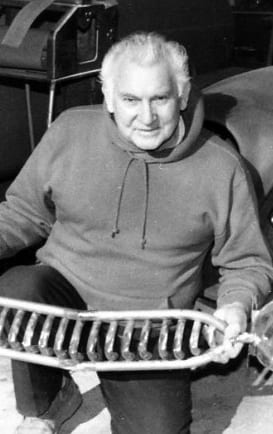 Joe Bailon lived firmly in the customizer camp, and to many observers his influence and body of work tops any “best of” list. Who else can claim inventing (albeit serendipitously) candy apple red paint?
Joe Bailon lived firmly in the customizer camp, and to many observers his influence and body of work tops any “best of” list. Who else can claim inventing (albeit serendipitously) candy apple red paint?
Bailon was born in 1923 in Newcastle, California, a small agricultural town near Sacramento. He was the youngest of 10 children. His father was a farm worker during the desperate times of the Depression. How desperate? Bailon was pulled out of school in second grade to help the family pick fruit.
According to automotive historian Dave Fetherston, Bailon would pass his spare time building toy cars from the of remains of wooden packing crates. When he turned 16, though, he scraped up enough money to buy a ’29 Model A coupe. It didn’t take long for young Joe to whirl into fledgling customizer mode.
First, he drove the coupe to a wrecking yard, then swapped the tin top for a cabriolet. At home he whacked off the soft top. For extra glam, he threw on mirrors, horns, and lights. For the coup de grâce, whitewall tires — hand-painted, of course.
When the war started, Bailon moved to Hayward, California, to work in the shipyards. There he learned the intricacies of cutting metal shapes with a torch, a skill that would pay dividends for decades. In 1943, he was drafted into the Army, where he remained until the end of the conflict.
Free at last, Joe soon bought a ’38 Ford three-window coupe. Inspired by a custom ’40 Merc by famed Oakland builder Tommy “The Greek” Hrones, Bailon lowered it, grafted on new taillights, and recessed the license plate. His work impressed a local body shop owner, who hired him. Moreover, one of the shop’s customers paid Bailon $700 for the ’38.
Bailon quickly snatched up a ’41 Chevy coupe and the resulting custom launched his name into custom history. The project took seven years, but the result – christened Miss Elegance – was a gem. The smooth, low, and sleek machine featured molded fenders, a new nose, custom grille, repositioned headlights, and more. Bailon blanketed the flowing body with a dazzling metallic brown-maroon hue. Inside, the dash featured 16 gauges and more switches than a B-17 cockpit. In other words, Bailon’s Chevy was as unrecognizable as it was spectacular. When the car debuted at the Oakland Roadster Show, it was easily honored “Most Elegant.”
As one would expect, Bailon soon became sought after and business boomed. His Hayward shop employed a cadre of helpers who did the grunt work while Joe concentrated on the chopping, channeling, and sectioning.
During this period, Bailon also became a spray gun savant – a Lorde of Lacquer, as it were – and along the way created arguably hot rodding’s most famous color: candy apple red. As a young customizer, Bailon was intrigued by how a California sunset would throw a translucent red glow through a taillight lens. What a sweet paint color that would be, he thought. One day, while playing with different paints, he accidentally spilled two bottles, a red and a gold, onto his workbench. When the two flowed together they created just the look he imagined. He sprinkled in some metallic dust and candy apple red was born – as much by chance as by design.
Car designer and writer Thom Taylor recently explained the allure of candy paint: “Custom cars were meant to be ‘mystery cars.’ And candy paints added to that mystery. The candies that Bailon created also gave the illusion that you could sink your arm into them!”
 Bailon, with help from his wife, Marie, went on to systematically create a wide range of candy colors, including such captivating names as Wild Cherry, Tangerine, and Orchid Pink.
Bailon, with help from his wife, Marie, went on to systematically create a wide range of candy colors, including such captivating names as Wild Cherry, Tangerine, and Orchid Pink.
With customs regularly rolling out of his Hayward shop, Bailon changed things up and moved south to North Hollywood, where he began tweaking late-model cars. Working in the shadow of Tinseltown led to building cars for stars: a Rolls for Zsa Zsa Gabor, a Chevy Vega for Sammy Davis Jr., a Cadillac for Dean Martin. This led to movie cars, too, the notable being the Pink Panther car. He even built cars for George Barris, with George never revealing their true origin.
Bailon closed his Hollywood shop in 1984 and returned to his NorCal roots and to building classic-style customs, including a re-creation of Miss Elegance (sold in the early-’50s, crushed in the ’70s). His accomplishments did not go unnoticed. In 1960, during the peak of his career, he was inducted into the National Roadster Hall of Fame, one of nine inaugural honorees. After creating more than a thousand customs and one very special paint hue, Joe Bailon passed away in 2017 at age 94.

